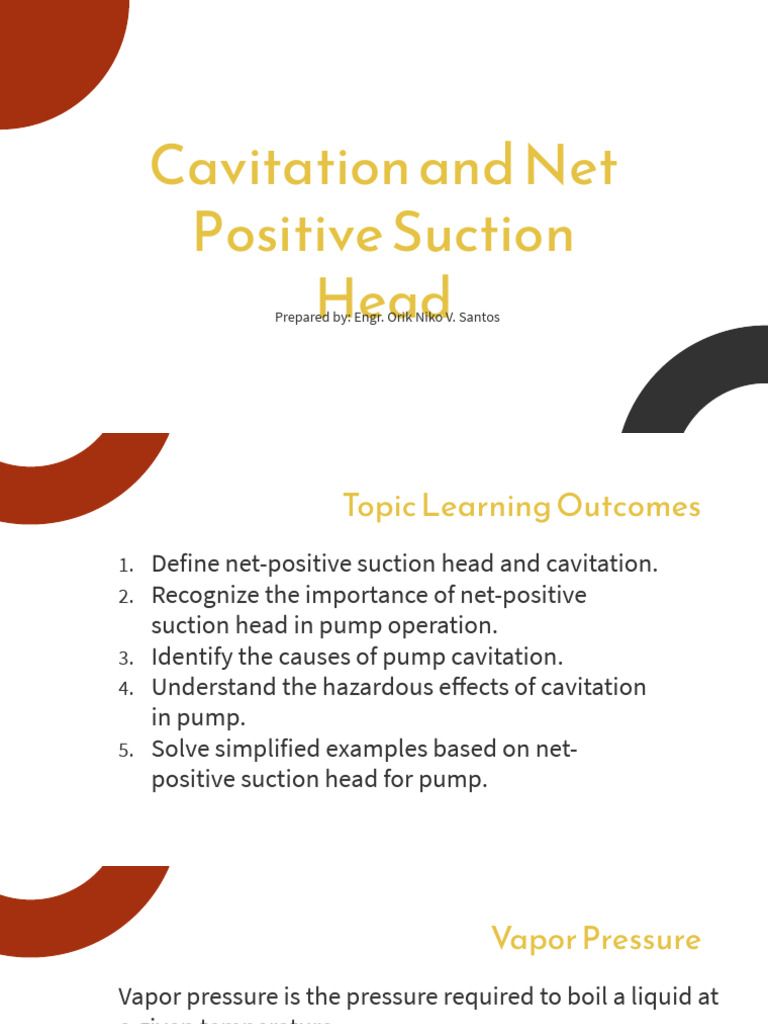12+ Net Positive Suction Head Formulas For Success

The concept of Net Positive Suction Head (NPSH) is crucial in the design and operation of pumps, as it directly impacts their efficiency, reliability, and overall performance. NPSH refers to the difference between the absolute pressure of a fluid at the suction inlet of a pump and the vapor pressure of the fluid. Essentially, it’s a measure of the pressure available to push the fluid into the pump, minus the pressure required to prevent the fluid from vaporizing. Ensuring a positive NPSH margin is vital to avoid cavitation, which can lead to noise, vibration, and potentially catastrophic damage to the pump.
Understanding NPSH
To grasp the importance of NPSH, it’s essential to understand the factors that influence it. These include the fluid’s vapor pressure, the pressure at the pump inlet, and the losses due to friction and velocity in the suction piping. Each of these factors can be quantified using specific formulas, which are then used to calculate the available NPSH (NPSHa) and the required NPSH (NPSHr) for a particular pump application.
NPSH Formulas for Success
Available NPSH (NPSHa): This is calculated using the formula NPSHa = Pd - Pv - hf, where Pd is the absolute pressure at the pump inlet, Pv is the vapor pressure of the fluid, and hf is the friction loss in the suction piping.
Required NPSH (NPSHr): This is typically provided by the pump manufacturer and depends on the pump design, speed, and the type of fluid being pumped. It can be influenced by factors such as impeller design and materials.
NPSH Margin: Calculated as NPSHa - NPSHr, this margin indicates how much additional pressure is available beyond what the pump requires to operate without cavitation. A higher margin provides a buffer against potential issues.
Friction Loss (hf): This can be estimated using the Darcy-Weisbach equation, hf = (f * L * v^2) / (2 * g * D), where f is the friction factor, L is the length of the pipe, v is the velocity of the fluid, g is the acceleration due to gravity, and D is the diameter of the pipe.
Vapor Pressure (Pv): For many fluids, vapor pressure can be found in tables or charts, but it can also be estimated using equations like the Antoine equation, log10(Pv) = A - B / (T + C), where Pv is the vapor pressure, T is the temperature in degrees Celsius, and A, B, and C are substance-specific constants.
Pressure at Pump Inlet (Pd): This can be measured directly, but if the system is complex, it may need to be calculated considering the pressure behind the pump (e.g., from a tank or another pump), minus any losses due to elevation changes and friction in the piping leading up to the pump.
Additional Considerations for NPSH Success
Fluid Properties: Understanding the properties of the fluid being pumped, such as its specific gravity, viscosity, and vapor pressure at different temperatures, is crucial for accurate NPSH calculations.
System Design: The layout of the suction system can significantly impact NPSH. Short, large-diameter suction lines with minimal fittings can help reduce friction losses and improve NPSHa.
Pump Selection: Choosing a pump with an appropriate NPSHr for the application is critical. Oversized pumps may require more NPSH than smaller ones, even for the same flow rate.
Operating Conditions: Changes in operating conditions, such as temperature or flow rate, can affect NPSH. Monitoring and adjusting the system as needed can prevent issues.
Maintenance: Regular maintenance, including checking for blockages or scaling in the suction piping and ensuring proper pump alignment, can help maintain optimal NPSH conditions.
FAQ Section
What is the primary cause of cavitation in pumps?
+Cavitation is primarily caused by insufficient Net Positive Suction Head (NPSH), leading to the formation of vapor bubbles within the pump. These bubbles can collapse with tremendous force, causing damage to the pump's internal components.
How can I reduce the risk of cavitation in my pump system?
+To reduce the risk of cavitation, ensure that the available NPSH (NPSHa) exceeds the required NPSH (NPSHr) by a sufficient margin. This can often be achieved by redesigning the suction system to minimize losses, selecting a pump with a lower NPSHr, or adjusting the operating conditions of the system.
What is the role of vapor pressure in NPSH calculations?
+Vapor pressure is a critical component in NPSH calculations as it represents the pressure at which the fluid will begin to vaporize. A higher vapor pressure indicates a higher risk of cavitation and must be considered when designing or operating a pump system.
In conclusion, managing NPSH is a delicate balance of understanding fluid properties, system design, pump selection, and operational conditions. By applying the formulas and considerations outlined above, engineers and operators can ensure the reliable and efficient operation of pump systems, mitigating the risks associated with cavitation and extending the lifespan of the equipment. Whether in industrial processes, water supply systems, or other applications, a thorough grasp of NPSH principles is essential for success.

